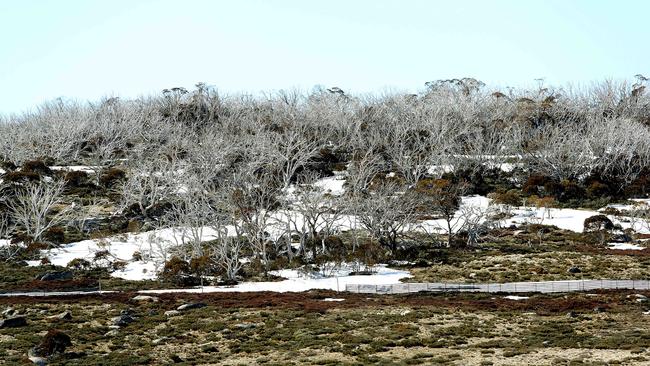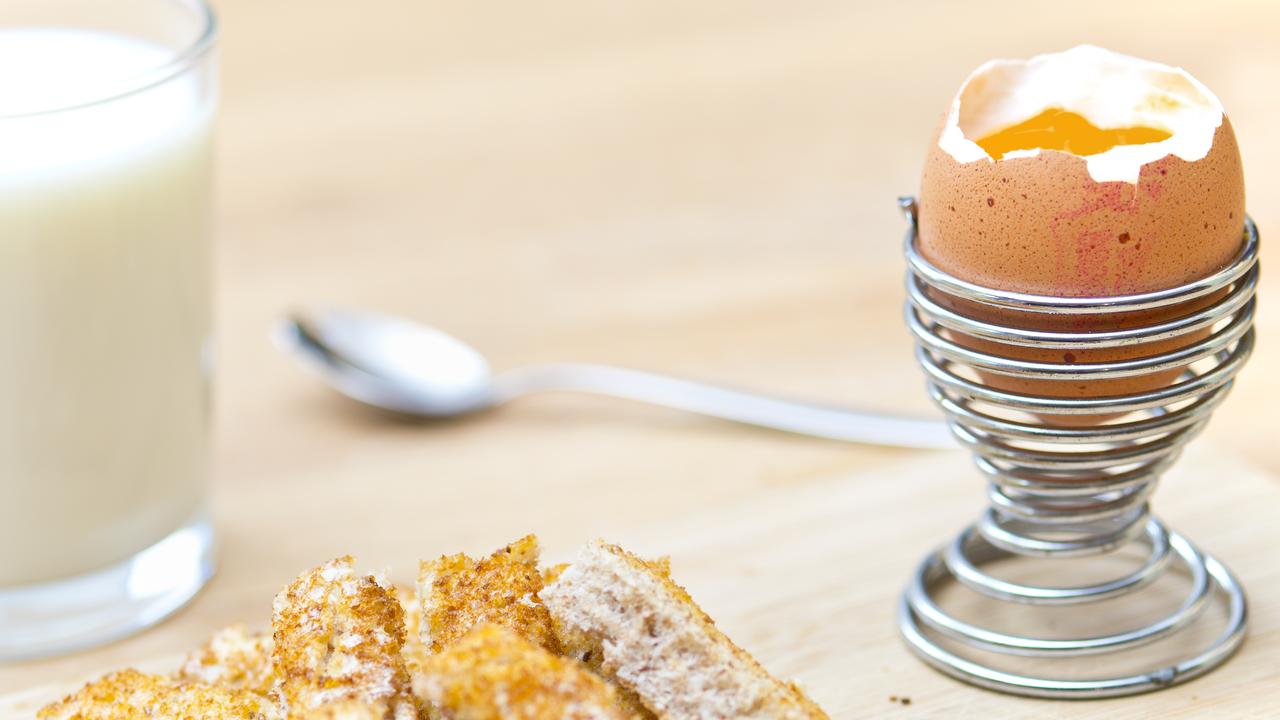Snow gums dieback threatens to leave alpine waste land
Across NSW, the ACT and Victoria, snow gums of all species are facing an outbreak of dieback, and no one can say for sure why.

As a Year 11 student in 1989, Matthew Brookhouse was on an Outward Bound course that nearly went terribly wrong. Camping at Long Plain near Yarrangobilly in Kosciuszko National Park, he suffered hypothermia and lost consciousness.
He was revived by friends and when he woke, the first thing he saw was weeping snow gums, their marbled trunks spiralling skywards out of the snow like wisps of smoke from a campfire. It was the most beautiful thing he’d ever seen.
Now a senior lecturer in environmental research at the Australian National University, Dr Brookhouse dreads what he’ll find when those same trees shake off their winter coats and prepare to face another long dry summer.
He knows many will be reduced to bare bones — dried up, brittle branches cracking in the sun, never to grow a leaf again — because many already are.
The snow gums are dying. A native longicorn beetle is ringbarking the trees all across Kosciuszko National Park. The destruction is stark, and it’s throughout the Australian alps — across NSW, the ACT and Victoria, snow gums of all species are facing an outbreak of dieback, and no one can say for sure why.
“It’s really upsetting,” says Dr Brookhouse. “We know it’s widespread, it’s consistent, and it’s the same insect damage. We just don’t know what’s driving it. So it’s hard to know where it’s going to end.”

Since it was first noticed in April, scientists have become worried we could face a repeat of the dieback that has killed nearly every ribbon gum (also called manna gum) in an area roughly bordered by Cooma, Jindabyne and Dalgety and left a 2000sq km waste land of dead trees.
The Monaro dieback, as it’s now known, crept up insidiously before anyone really noticed it.
Dr Brookhouse is determined not to let that happened with the snow gums.
“We need to act now. We don’t want to be left scratching our heads in 20 years’ time.”
A different insect, a native leaf-eating weevil, attacked the ribbon gums. But the problem goes much deeper than insects, which are merely finishing off the weakened trees. Dr Brookhouse suspects the snow gums are drought-stressed, with their dry trunks making easy pickings for the wood-borers.
This summer, he will lead a research team to survey the extent of the snow gum declines across the alps, the true extent of which is still unknown.
“We need some serious data-gathering,” he said. “We’ll be opening up an online mechanism for the public to report tree damage.
“We need people to help us with observations.”
The team will investigate moisture stress in the trees, establish long-term monitoring plots and perform an insect survey.
Dr Brookhouse said they knew the genus doing the damage — phoracantha — but not the exact species.
What scientists do know about phoracantha is that they go for drought-stressed trees, targeting dry trunks. A moist trunk acts like a moat, drowning insect invaders.
Dr Brookhouse suspects shorter winters could be playing a part in drying out the trees.
“It’s devastating, he said.
“These trees are symbolic of a remote and wild place.
“They’re an emblem for wilderness, and we’re watching them die.
“It feels like I’m losing a part of myself.”


